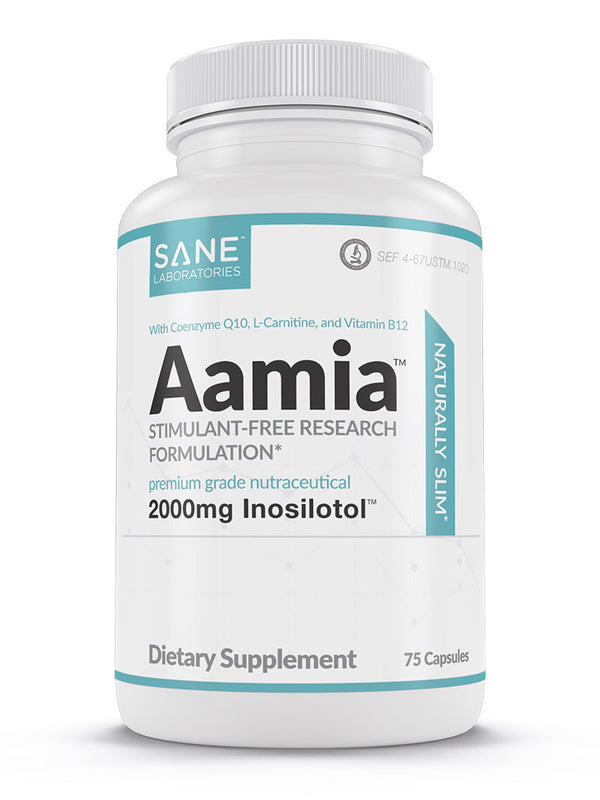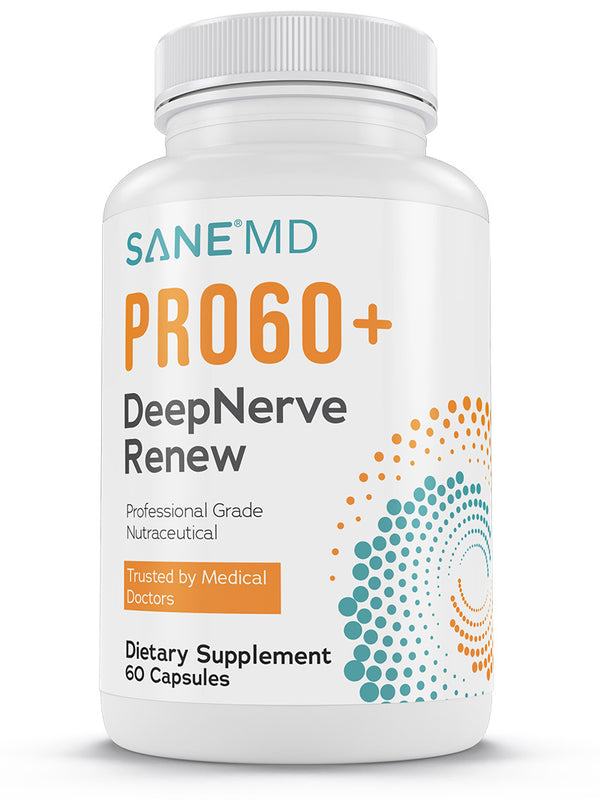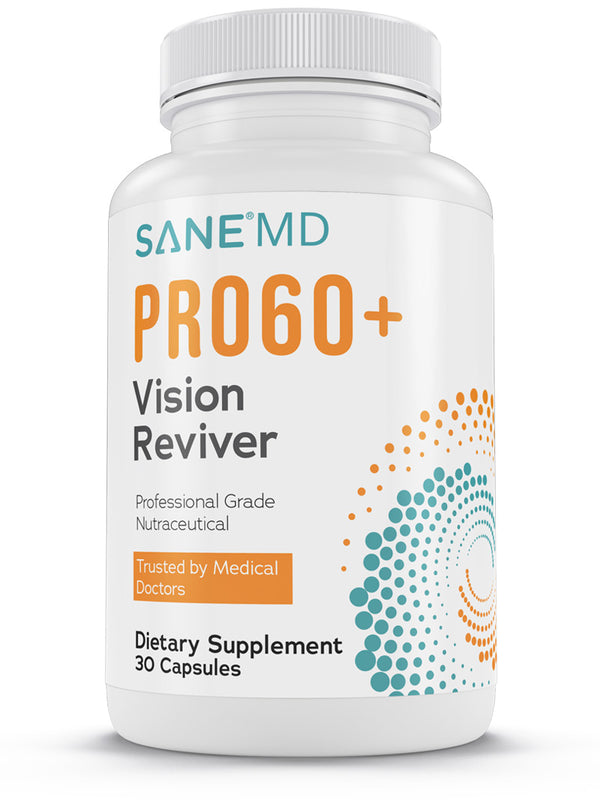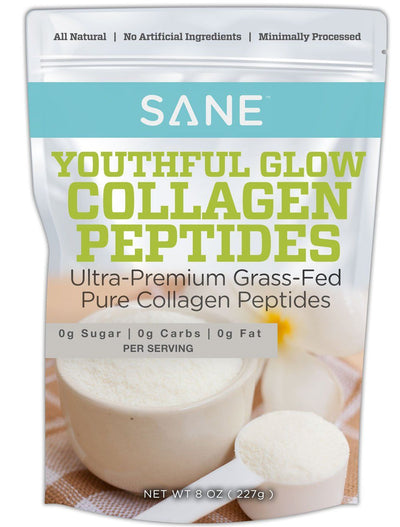Ever stopped to think about the vibrant, microscopic world living inside your gut? It's fascinating! Your intestines aren't just about digesting food; they're home to trillions of bacteria working behind the scenes to keep your body functioning. From breaking down the food you eat to boosting your immune system and even influencing your mood, these bacteria are absolutely vital.
Click here to learn more about Viscera-3® and to place your order now while supplies last!
This bustling community of organisms is what we call thegut microbiome. Think of it like a unique ecosystem—so unique, in fact, that it’s as personal to you as your fingerprint. When your gut microbiome is in balance, it supports your overall well-being, helping with everything from nutrient absorption to protecting against harmful bacteria and viruses.
Why does this matter for you? Because knowing how to nurture your gut health can truly transform how you feel, both mentally and physically. By making small, intentional choices—whether it’s tweaking your diet or adjusting lifestyle habits—you can help keep your gut bacteria happy, which in turn can positively impact your entire health.
Feeling curious yet? If this sparked your interest, share the article with someone who might benefit from knowing how crucial gut health is. It’s a great conversation starter, and who knows? You might just inspire others to take better care of their bodies from the inside out!
Before we dive into the bacteria that inhabit every part of your digestive system—from your mouth all the way to the other end—let’s first get a quick refresher, i.e., questions, on the basics of bacteria that we will be answering later in this article:
-
What are the five types of bacteria?
-
What is a simple definition of bacteria?
-
Where do bacteria live?
-
Where do bacteria come from?
-
What are five examples of bacteria?
-
What are the characteristics of bacteria?
-
What diseases are caused by bacteria?
-
What are the three main types of bacteria?
-
What’s the difference between viruses and bacteria?
-
Are bacteria alive?
-
Is a virus an organism?
-
Where are most bacteria found in the human body?
-
How do bacteria grow?
-
Why are bacteria important in our lives?
-
How do bacteria make us sick?
What Are the 5 Types of Bacteria?
-
Cocci – These are the round, spherical-shaped bacteria that you’ve probably heard of, especially when it comes to illnesses like strep throat. They can live on their own or group together in clusters, making them quite versatile when it comes to spreading infection.
-
Bacilli – Think of these as the rod-shaped bacteria, like E. coli. While some types are harmless and live in your gut, others can cause infections. These bacteria have a long, cylindrical shape and are commonly found in the intestines.
-
Spirilla – These are less common but still worth noting. Spirilla have a distinct spiral shape and are known to cause diseases like syphilis. Their twisted form helps them move in a unique way.
-
Vibrios – Shaped like a comma, vibrios are famous for their role in causing cholera, a serious illness that often spreads through contaminated water.
-
Spirochetes – Long, thin, and flexible, these bacteria can twist and turn as they move. Spirochetes are known to cause Lyme disease and other infections, often transmitted through ticks or other vectors.
What Is a Simple Definition of Bacteria?
Bacteria are tiny, single-celled organisms that exist pretty much everywhere on Earth. They come in all sorts of shapes and sizes, and depending on the type, they can either be helpful or harmful. Some bacteria help us digest food, while others can cause infections.
Where Do Bacteria Live?
Bacteria are incredibly adaptable, so they can live just about anywhere—from the hottest spots near volcanoes to the icy landscapes of Antarctica. You’ll find them in soil, water, inside living creatures (including humans), and even on everyday objects. Their ability to thrive in so many different places makes them real survivors!
Where Do Bacteria Come From?
Bacteria have been around for billions of years and are thought to be one of the earliest forms of life on Earth. They multiply quickly by dividing, which helps them spread and adjust to new environments with ease.
What Are 5 Examples of Bacteria?
-
Escherichia coli (E. coli) – Found in the intestines of humans and animals. Some strains are harmless, but others can cause food poisoning.
-
Staphylococcus aureus – Lives on the skin and in the respiratory tract. It can cause skin infections and, in some cases, pneumonia.
-
Streptococcus pneumoniae – Known for causing pneumonia, meningitis, and other respiratory infections.
-
Lactobacillus – A helpful bacteria found in your gut and in fermented foods, like yogurt. It aids digestion.
-
Salmonella – A common culprit behind foodborne illnesses.
What Are the 5 Characteristics of Bacteria?
-
Cell Structure – Bacteria are prokaryotic, meaning they don’t have a nucleus or other membrane-bound organelles.
-
Reproduction – Most bacteria reproduce by binary fission, a simple form of asexual reproduction.
-
Metabolism – They can use all kinds of materials—both organic and inorganic—to get their energy.
-
Size and Shape – Bacteria can be spherical, rod-shaped, or spiral, depending on the type.
-
Cell Wall – Most bacteria have a cell wall that helps protect and support them.
What Diseases Are Caused by Bacteria?
-
Tuberculosis – Caused byMycobacterium tuberculosis.
-
Bacterial Meningitis – Often caused byNeisseria meningitidis.
-
Lyme Disease – Caused byBorrelia burgdorferi, typically transmitted through tick bites.
-
Cholera – Caused byVibrio cholerae.
-
Strep Throat – Caused byStreptococcus pyogenes.
What Are the 3 Main Types of Bacteria?
-
Gram-Positive Bacteria – Have a thick cell wall made of peptidoglycan and appear purple after a Gram stain test.
-
Gram-Negative Bacteria – Have a thinner peptidoglycan layer and an outer membrane, which causes them to stain pink in a Gram test.
-
Archaea – Although they’re often grouped with bacteria, archaea are genetically distinct and are usually found in extreme environments, like hot springs or salt lakes.
What’s the Difference Between Viruses and Bacteria?
-
Structure – Viruses are much smaller than bacteria and need a host cell to survive and multiply. Bacteria, on the other hand, can live on their own.
-
Reproduction – Viruses invade host cells to reproduce, while bacteria can multiply independently.
-
Treatment – Bacterial infections are typically treated with antibiotics, but these don’t work on viruses, which require different treatments.
Are Bacteria Alive?
Yes, bacteria are very much alive! They meet all the basic criteria for life, like growing, reproducing, responding to their environment, using energy, and maintaining balance within themselves. Essentially, they tick all the boxes that define what we consider “living.”
Is a Virus an Organism?
This one’s a bit trickier. Most biologists don’t see viruses as true living organisms. Why? Because on their own, outside of a host, they don’t do much—they can’t reproduce, don’t have a cell structure, and don’t metabolize. It’s only when they hijack a host’s cells that they start to act like they’re alive. So, viruses occupy a strange middle ground between living and non-living.
Where Are the Most Bacteria Found in the Human Body?
The gut is the hotspot for bacteria, especially in the large intestine. This bustling microbial community is key to many of our body’s functions, from digestion to immune support, and plays a crucial role in maintaining our overall health.
How Do Bacteria Grow?
Bacteria grow through a process called binary fission. Imagine one cell splitting in half to create two identical cells—that’s essentially what happens. Under the right conditions, this process happens fast, which is why bacterial populations can multiply so quickly.
Why Are Bacteria Important in Our Lives?
Bacteria aren’t just something to fear—they’re actually pretty essential!
Here’s how:
-
Digestion: The bacteria in your gut help break down the food you eat and even produce nutrients your body needs.
-
Immune Support: Your gut bacteria also help keep your immune system strong and balanced.
-
Environmental Benefits: Out in the world, bacteria are nature’s recyclers. They break down organic matter and help cycle nutrients back into the soil.
-
Biotech Uses: We also use bacteria to make antibiotics, enzymes, and even biofuels.
Bacteria are much more than just germs—they’re a key part of life on Earth!
How Do Bacteria Make Us Sick?
While many bacteria are helpful, some can make us sick, and they have a few sneaky ways of doing this:
-
Invasion and Multiplication: Some bacteria make you sick by getting into your body, sticking to your cells, and multiplying. This can interfere with how your body normally functions. For example, bacteria that cause urinary tract infections multiply in the bladder, leading to inflammation and discomfort.
-
Toxin Production: Many bacteria release harmful toxins. There are two main types:
-
Exotoxins: These are powerful toxins released by bacteria likeStaphylococcus aureus, which can cause food poisoning, orClostridium tetani, responsible for tetanus.
-
Endotoxins: These are part of the bacterial cell wall and are released when bacteria die, often leading to inflammation, like in infections caused byE. coli.
-
-
Evading the Immune System: Some bacteria are crafty and can hide from your immune system. For example, certain bacteria create a biofilm—a protective layer—that shields them from both your immune cells and antibiotics.
-
Living Inside Cells: Some bacteria, like those causing tuberculosis, can actually live inside your body’s cells, making them harder to detect and eliminate.
By understanding how bacteria cause illness, we can find better ways to treat and prevent infections, keeping us healthier in the long run.
How Many Types of Microorganisms Live on/In Humans?
It might surprise you to learn just how many microorganisms call your body home! Although the exact numbers can vary from person to person, on average, we’re carrying around approximately 100 trillion bacterial cells and an astonishing 10 quadrillion viruses at any given moment. Most of these microbes make themselves comfortable in the mucus membranes that line your intestinal tract, but they also hang out in other areas of your body.
What Happens If Bacteria Overgrow in Your Body?
Normally, your body keeps the balance of bacteria in check, but when things go off track—even just a little bit—issues can arise. For example, minor imbalances in your gut’s bacterial populations can lead to problems like yeast infections or digestive troubles. However, if there's a major disruption, it can result in a condition known asdysbiosis. This happens when harmful bacteria grow out of control, disrupting the delicate balance of your gut flora and potentially leading to disease.
What About Viruses – Are All Viruses Bad for You?
Not at all! While some viruses can make us sick, others can actually be helpful. For instance, certain RNA viruses, called retroviruses, perform a useful task in your body by carrying an enzyme called reverse transcriptase. This enzyme plays a key role in the transcription of DNA, which is essential for protein synthesis—a vital process for your cells.
What Causes Disease? How Do We Get Sick?
Disease often strikes when there’s an imbalance between the microorganisms in your body and your surrounding environment—or, to put it simply, when “bad things happen to good people.” If your immune system loses track of the harmful viruses or bacteria living inside you, these invaders can multiply rapidly or spread to places they shouldn’t, like your bloodstream, brain, or heart tissue. When this happens, it can lead to serious conditions like pneumonia or meningitis.
Gut Microbiota
How Many Types of Gut Flora and Bacteria Are There, and What Do They Do?
Thehuman gut microbiome is home to a diverse range of bacteria—at least 1,000 different types, to be exact! Each one has a specific job and thrives in a unique environment within your digestive system. Some bacteria love the stomach’s high acidity, while others are perfectly suited to the lower pH found in the intestines.
These tiny helpers aren’t just hanging out—they’re busy digesting food and producing vital nutrients like vitamin K and biotin. They also help turn food into energy, keeping your body running smoothly.
What Are the Benefits of Gut Bacteria?
Scientists are discovering just how essential gut bacteria are for overall health. For example, these organisms produce important vitamins like K, biotin, and folate (vitamin B9). Vitamin K and biotin are vital for heart health, while folate is crucial for pregnant women to ensure proper fetal development.
How Does Healthy Gut Flora Make You More Resistant to Illness/Disease?
Having a healthy gut flora doesn’t just help with digestion—it can also prevent harmful bacteria from gaining a foothold in your body. The good bacteria in your intestines act as a defense team, crowding out pathogens and helping your immune system stay strong. Ongoing research into how these microorganisms work with our immune system might unlock new ways to prevent and treat various illnesses.
What Kind of Bacteria Lives in Our Mouths?
Compared to the rest of your body, the number of bacteria in your mouth is relatively small, but it’s still home to about 700-800 different bacterial species. Some of these bacteria are beneficial, while others can cause problems, like gingivitis or periodontal disease, if they start multiplying unchecked.
Which Bacteria Live in the Esophagus?
Most of the bacteria in your esophagus are "aerobic," meaning they need oxygen to survive. While they usually don't cause any issues, some strains can lead to serious conditions, including esophageal cancer.
What Bacteria Line the Stomach?
Your stomach is like a fortress—it protects itself against harmful organisms while also breaking down food so your body can use it for energy. It accomplishes this by releasing hydrochloric acid, which not only kills most bacteria but also helps digest food by breaking down proteins and carbohydrates.
Though the stomach is a tough environment, a healthy gut flora (particularly in the intestines) plays a critical role in protecting you from dangerous pathogens like cholera, typhoid, and salmonella.
What Type of Bacteria Lines the Small Intestines?
The small intestine is where the magic happens when it comes to absorbing nutrients and water from your food. It’s also home to both aerobic bacteria and immune cells, which work together to defend against harmful invaders.
Some of the key bacteria in your small intestine include:
-
E. coli – Essential for nutrient production.
-
Lactobacillus acidophilus – A probiotic that helps digest lactose found in milk.
-
Bifidobacterium bifidum – Another probiotic that breaks down complex sugars.
-
Saccharomyces boulardii – A symbiotic yeast known for its ability to block pathogenic organisms.
What Kind of Bacteria Lives in the Large Intestines?
The large intestines are home to a bustling community of "anaerobic" bacteria—microorganisms that don’t need oxygen to thrive. These bacteria are hard at work, helping us break down food and absorb important vitamins like vitamin K and biotin. They also play a role in breaking down carbohydrates, turning them into simple sugars that our bodies use for energy.
Some key players in the large intestine include:
-
Bacteroides fragilis – This bacteria helps digest proteins and produces byproducts that stimulate the immune system, protecting us from harmful pathogens.
-
Fusobacterium nucleatum – Known for its ability to prevent the growth of dangerous bacteria likeClostridia, which can cause serious issues like gas gangrene or food poisoning.
-
Clostridium butyricum – Helps produce essential vitamins such as biotin and thiamine, keeping your body fueled.
-
Lactobacillus plantarum – A common probiotic that synthesizes enzymes to soften stools and helps release nutrients from your meals.
Your gut is also home to a variety of other organisms, including archaea (which produce energy by creating methane), protists, fungi, and even viruses.

How Do You Maintain a Healthy Gut Flora?
Keeping your gut flora balanced is key to good digestion and overall well-being. After all, poor gut health can lead to inflammatory bowel diseases, like ulcerative colitis and Crohn's disease,irritable bowel syndrome, and other digestive conditions.
Here are some ways to support your gut health:
-
Diet: Eating a fiber-rich diet is one of the best things you can do for your gut. Fiber feeds the beneficial microbes in your intestines, while processed sugars can feed harmful bacteria. Fresh fruits and vegetables are especially good for keeping your gut flora balanced.
-
Postbiotic Supplements: Postbiotics are the byproducts of probiotic activity, and they help keep your intestinal lining strong and support the growth of good bacteria. Postbiotics like short-chain fatty acids and amino acids are essential for maintaining a healthy gut. Since everyone’s gut is a bit different, you might want to try different postbiotic supplements to see what works best for you.
-
Health Checks: Once you’ve established a healthy gut flora, maintaining that balance is essential. Regular health check-ups are a great way to catch any imbalances early. For instance, bacteria likeC. difficile are becoming more common and can lead to severe infections if left untreated. Routine screenings can help keep your gut—and overall health—in check.
What is the Best Supplement for Gut Health?Viscera-3®
SANE MD Viscera-3® is a powerful supplement designed to support a healthy gut microbiome and deliver additional benefits like:
-
Supports Overall Health: Packed with antioxidants and essential vitamins.
-
Boosts Digestion: It provides digestive enzymes that help break down food, making it easier for your body to absorb nutrients. It can also relieve bloating, gas, and cramping.
-
Promotes Regularity: Viscera-3® helps nourish your intestines with soluble fiber, keeping you regular without causing discomfort or bloating.
-
Strengthens Gut Lining: This supplement contains postbiotics that reinforce the intestinal lining and promote the growth of beneficial gut bacteria.
Viscera-3® is a fantastic option for anyone—whether you're just starting on your gut health journey or you’re a seasoned pro. It assists in digesting food, breaking down proteins and carbohydrates for energy, and even helps lubricate joints and improve neurological function.
Click here to learn more about Viscera-3® and to place your order now while supplies last!
































